Australian Tropical Rainforest Plants - Online edition
Endiandra insignis (F.M.Bailey) F.M.Bailey


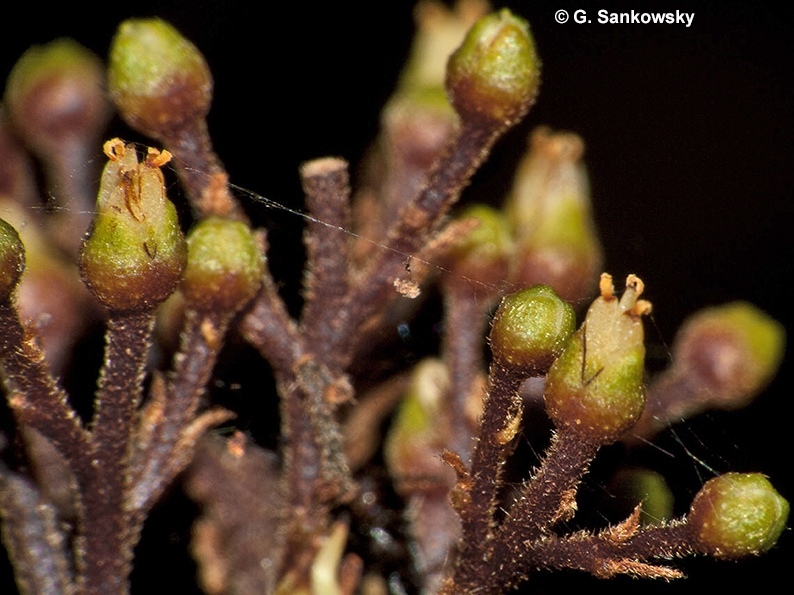
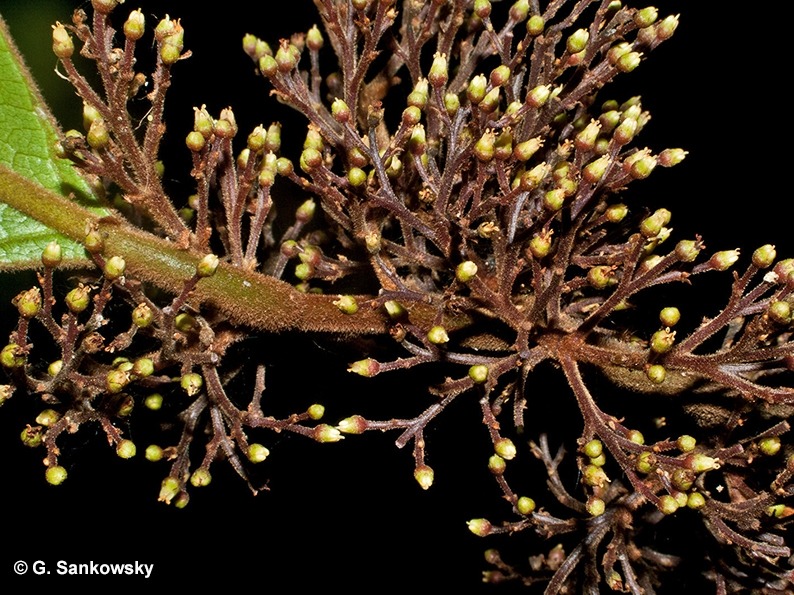

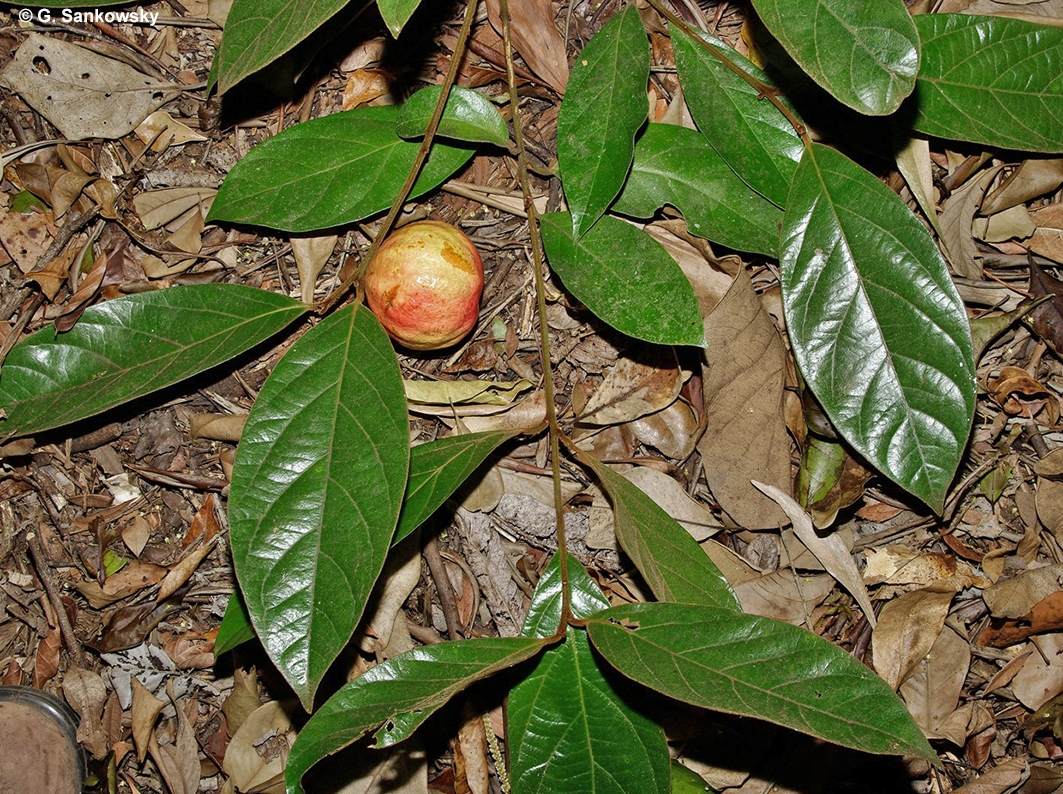
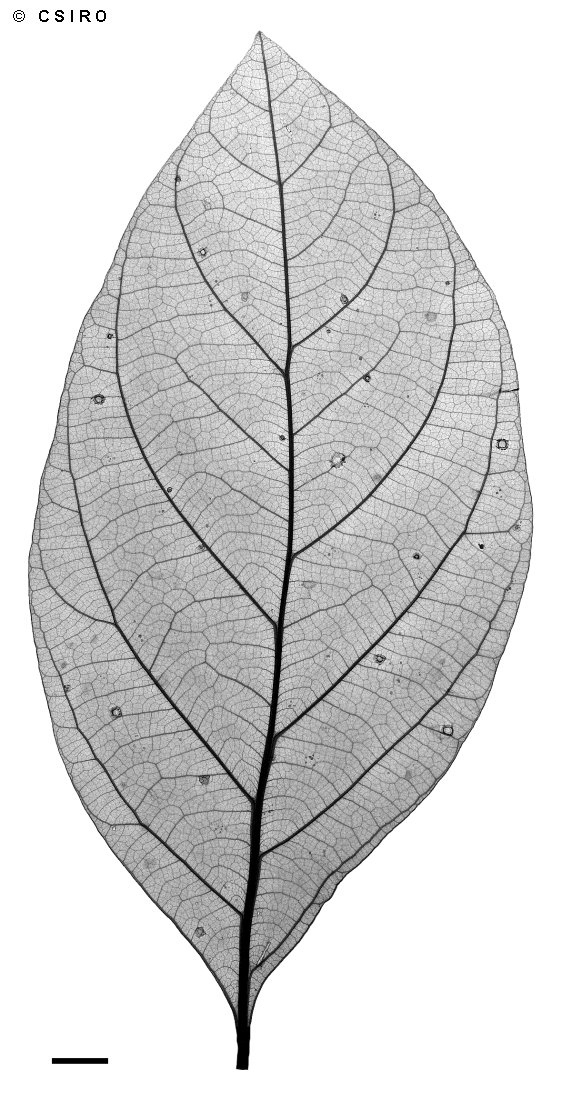


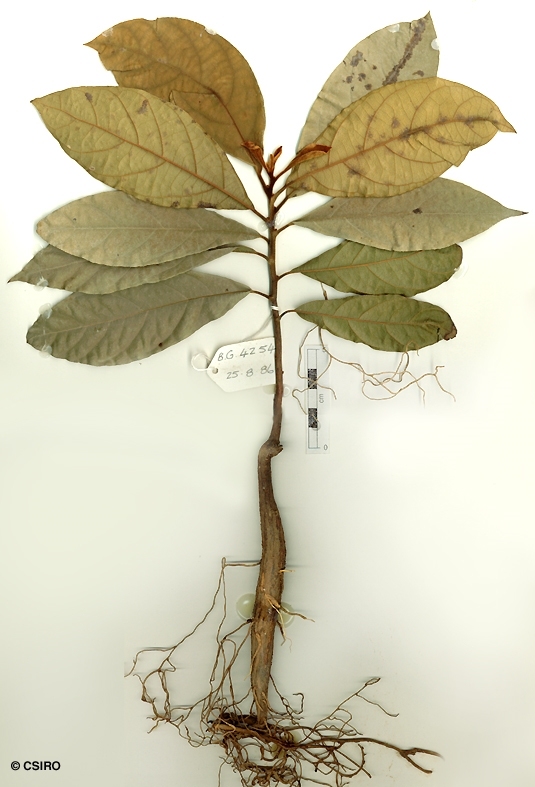
Bailey, F.M. (1897) Queensland Agricultural Journal 1(1): 80.
Hairy Walnut; Walnut, Rusty; Rusty Walnut; Walnuit, Hairy
A thin cream or pale brown layer normally visible under the subrhytidome layer before the first section of the outer blaze.
Twigs terete or fluted, clothed in tortuous, erect, brown or reddish brown hairs. Leaf blades about 10-22 x 2.5-13 cm, green on the underside, clothed in tortuous, erect, brown hairs. Midrib flush with or very slightly depressed on the upper surface. Petiole flat on the upper surface. Oil dots visible with a lens.
Flowers pleasantly perfumed, scarcely opening at anthesis, the tepals remaining erect forming a sheath around the exserted anthers and styles. Tepals about 0.4-1.4 mm long. Staminal glands six, free from one another. Staminodes three, +/- lanceolate, not differentiated into a head and stalk.
Fruits globular, sometimes wider than long, usually longitudinally ribbed, about 50-90 x 50-100 mm. Seed about 25-50 x 22-46 mm. Cotyledons cream to apricot.
First pair of leaves elliptic to slightly obovate, about 80-140 x 30-60 mm, green on the underside. At the tenth leaf stage: leaves hairy on the upper surface; oil dots small, visible only with a lens; terminal bud, petioles and stem densely clothed in long reddish or brown hairs; taproot thickened, +/- carrot-like (Daucus carota). Seed germination time 56 to 280 days.
Fruit eaten by Cassowaries and Musky Rat-kangaroos. Cooper & Cooper (1994).
This species produces millable logs and the sawn timber is marketed as Hairy Walnut, a useful general purpose timber. Wood specific gravity 0.70-0.80. Hyland (1989).





